Getting your first dog is an exciting time.
You may already have ideas about what kind of dog you want, and that’s great! However, it’s worth keeping in mind that some types of dogs will be much better suited for first-time owners than others.
There’s so much to think about as you prepare to bring home a family member that could be in your home for 15 years or more.
One of the most common places to start narrowing your search is breed. While breed alone isn’t everything, it’s a good starting point for finding your perfect match.
Best and Worst Dog Breeds for First-Time Owners: Key Takeaways
- There are a number of things to think about when selecting your first dog. However, your soon-to-be dog’s breed is one of the most important things to consider. Simply put, some breeds typically make good pets for first-time owners; others are usually poor choices for beginners.
- A few of the best breeds for first-time owners include shih tzus, Labs, goldens, and whippets. However, there are several other breeds we’ll discuss below that also make great first-time pets.
- A few of the worst choices for first-time owners include Akitas, Rottweilers, and cani corsi, among others. These breeds can make great pets for experienced owners, but they’re usually too challenging for newbies.
Why Breed Matters for First-Time Owners
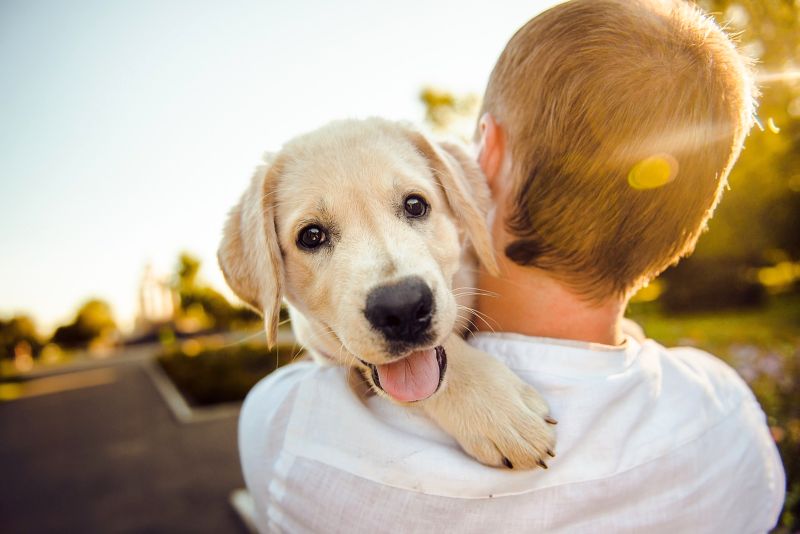
Really, breed matters for all owners. Even if you’re flexible on what you’re looking for in a dog, you probably have a few preferences for things like size, coat type, energy level, and friendliness.
As a dog behavior consultant, many of my most difficult cases originate from owners getting in over their head with a fashionable breed that’s the wrong fit for their homes.
At the shelter I work with, we see thousands of dogs each year that were mismatched with their owners. Many of these poor fits could have been avoided if the humans spent more time researching their chosen breed.
Every dog breed originated with a specific needs and goals in mind. Some dogs are bred for hunting, while others were designed for guarding, pulling sleds, herding, or sitting on laps. These differing goals mean that these breeds all have vastly different energy levels and temperaments.
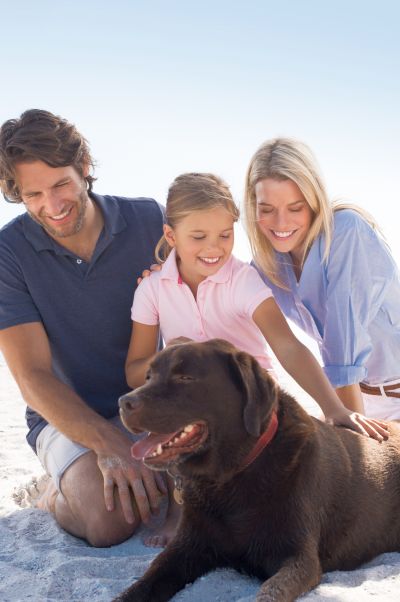
Let’s take my dog Barley as an example. He’s a border collie — a breed that’s notorious for being wicked smart and having a go-go-go attitude (he’s a total fetch maniac)!
Charming border collies doing handstands and yoga on YouTube really “sell” this breed, but they’re not a great fit for most first-time families.
There are days where Barley comes home from a 19-mile run, takes a two-hour nap, and is then ready for more action as he runs circles around the house squeaking his 93 different toys. In addition to his boundless energy, he can open doors. You can see why letting him get bored could be a recipe for disaster.
If I had small children (like Barley’s previous owner did), I honestly doubt I could handle having Barley in my home. He’s incredibly trainable and will do almost anything I ask, but I have to constantly give him tasks, or he makes up games and jobs for himself.
If I wasn’t a marathon-running dog trainer, Barley would be a very challenging dog!
It’s easy for me to take a few impressive training videos of him and pretend he’s the most perfect dog out there (well, he is to me). The truth is that this breed is a tough one, and they really aren’t for everyone.
The point is, Barley is a very typical border collie. Anyone who has done a little research on the breed would know how high-octane these dogs can be.
Still, we get hundreds of herding dog mixes brought to the shelter for behavior problems that are depressingly common with underchallenged and bored dogs. They bark, dig, chase children, and try to herd cars.
Take the time to Google what your chosen breed is bred for and common behavior problems. Research is imperative to success as a first-time owner.
Before selecting a dog, take some time to get real about what you’re looking for. K9 of Mine’s pre-adoption series will help you create a scorecard and really think through the preparation process.
Don’t base your decision off of an individual dog!
I’ve met enough Akitas to know that they’re generally a very tough breed, but my neighbor’s Akita is easier to handle and friendlier than most Labs I’ve met.
A Note on Mixed-Breed Dogs for First-Time Owners
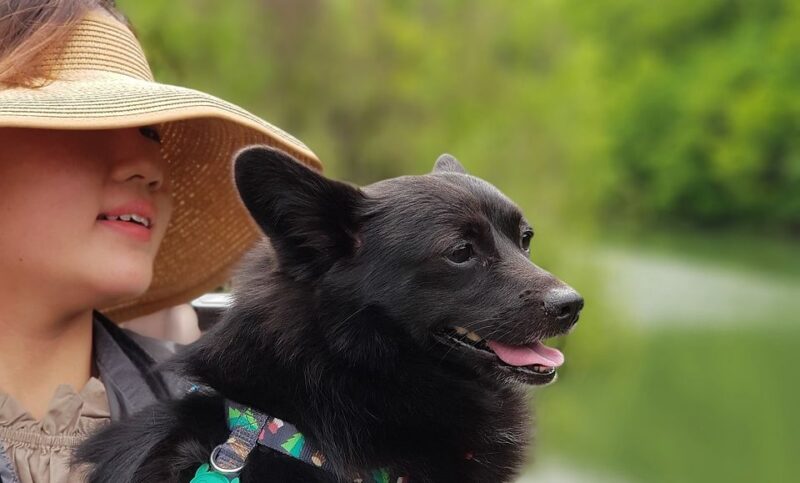
There’s absolutely nothing wrong with mixed-breed dogs. In many cases, mixed breeds are a great place to start for first-time owners.
Adopting an older mixed-breed from the shelter can give you the advantage of a pre-trained dog with known behavioral habits, and mixed-breed puppies can be great for first-time owners who want a younger dog.
They often average out any extreme behavioral tendencies of their parents, but not always.
Overall, mixed breeds are a great option.
However, it’s important to realize that whenever you purchase or adopt a mixed-breed dog, you’re less likely to understand what you’re adopting than with a purebred.
For most owners, this isn’t a huge problem. But if you have big competitive agility or hunting goals, you may at a disadvantage with a mixed breed. Mixed-breed dogs are a great option if you don’t have strict goals or needs for your dog (and despite that, I know several successful service dogs, agility competitors, and child-friendly mixed breeds).
The more breeds mixed into your dog’s makeup, the more moderate your dog’s temperament will usually be. Having a mix of various breeds often tends to cancel out extreme behaviors from any individual breed.
Labradoodles, Goldendoodles, Pomskies, and Huskadors are examples of popular mixed breed dogs.
But these breed combos often display inconsistent personalities from individual to individual. Genetics don’t work like a recipe, and mixed breeds don’t automatically exhibit the best traits of both their parents.
I’ve met plenty of Goldendoodles that have the nervous energy of a skittish poodle and the high-shedding coat of a typical golden retriever. Not exactly the stable-tempered “hypoallergenic” service dog that many breeders advertise! That’s why the original ‘doodle breeder actually regrets his decision to make the cross.
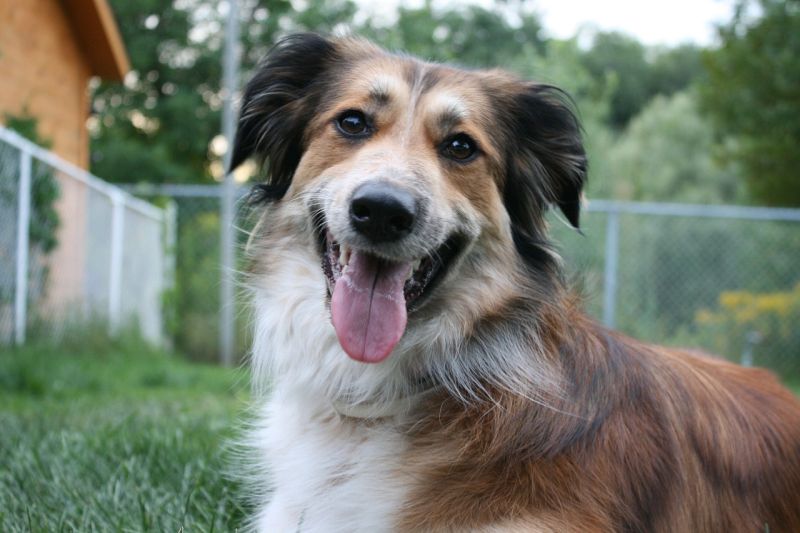
And when the parent breeds of a given mix are unknown, it’s almost impossible to predict what the puppy will grow up to be like. Luckily, most mixed breed dogs are lovely pets that hit the middle of the road on most personality traits — perfect for the first time owner!
The bottom line is that you’re bringing a living animal into your home, and that’s always a gamble.
It’s important to take a hard look at a variety of traits across the breed. Picking the cutest dog from a photo array isn’t the best way to go. That’s why we created this guide!
Best Dog Breeds for First Time Owners
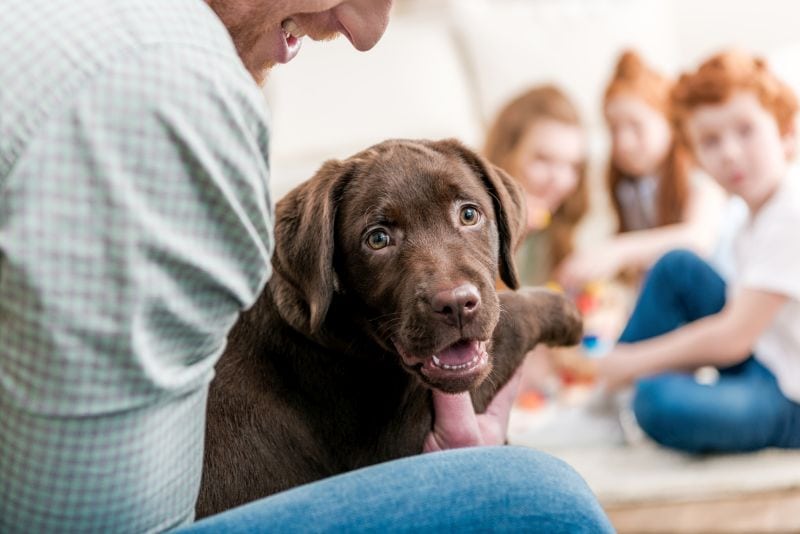
Look for dogs that are generally described as trainable, eager to please, and friendly when selecting your first dog breed. We created a list that varies by energy level, coat type, brains, and brawn.
These dogs are ranked by size, not by preference.
1. Shih Tzus
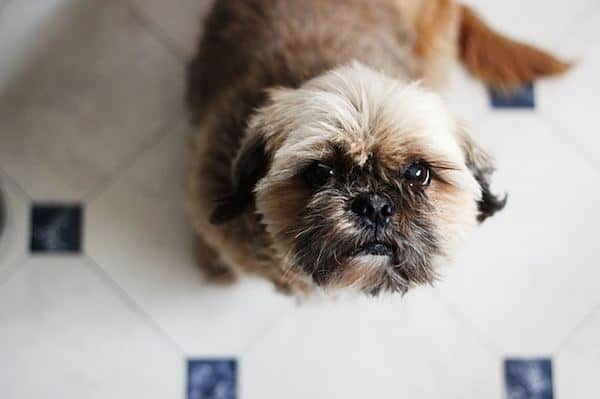
Shih tzus are spunky and oh-so-cute. Their coat takes a bit more work than pugs, but they’re surprisingly athletic. They’re fun for homes with kids and laid-back owners.
Energy Level: Medium-high. Shih tzus are alert and enjoy activity.
Coat Type: Long, and they’ll need regular grooming.
Brains: Loveable lunks. According to Stanley Coren’s The Intelligence of Dogs, shih tzus are ranked 127 out of 137 for intelligence and need 80 to 100 or more repetitions to learn new cues.
Brawn: Pocket-sized pooches, shih tzus weigh 9 to16 pounds and stand just 8 to 11 inches tall.
2. Pugs
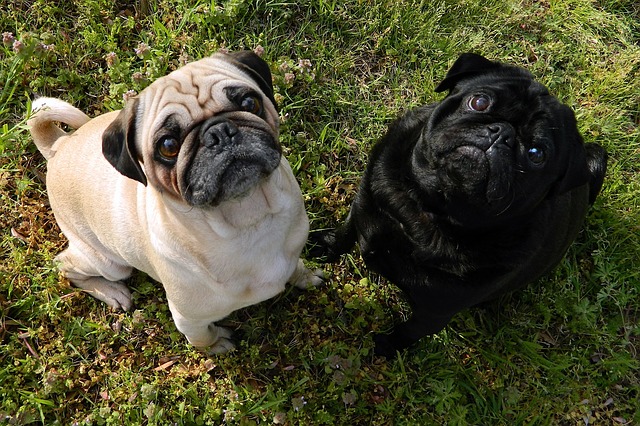
Pugs are consistently friendly, happy-go-lucky dogs with an adorable face. Their biggest downside is their many health problems from that adorable short nose, so be sure that you’ve got the money for potential health problems and the heart for a dog that might not live to 10 years old.
Energy Level: Low-Medium. Pugs are playful and enjoy a good romp, but their short legs and short noses make breathing and running challenging.
Coat Type: Short & easy. No crazy coat maintenance here!
Brains: Loveable lunks. Pugs are ranked 107 out of 137 for intelligence. They generally take 40 to 80 repetitions to learn a new command.
Brawn: Pugs are small but mighty little tanks, weighing about 14 to 18 pounds and stand just 12 to 13 inches tall.
3. Cavalier King Charles Spaniel

Cavalier King Charles spaniels are cheerful little dogs. They have a slightly longer noses than pugs, but still may suffer from similar health concerns.
Energy Level: Low-Medium. Always up for a good game or walk, cavaliers are still great lap dogs.
Coat Type: Long, requires regular brushing.
Brains: Average intelligence. Ranked 72 out of 137. They generally take 25 to 40 repetitions to learn a new command.
Brawn: Tiny, 13 to 18 pounds and only 10 to 13 inches tall.
4. Whippet
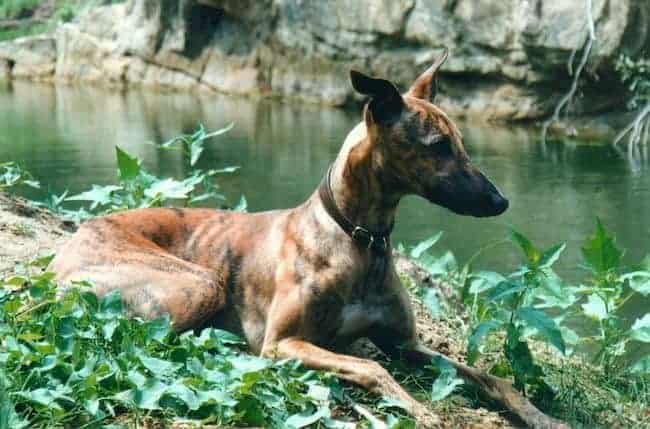
Despite being bred for racing, sighthounds are notorious couch potatoes. They’re not very trustworthy off leash, but they’re excellent and loving companions for apartment living.
Energy Level: Medium. Whippets will enjoy a good sprint or two, but they are not endurance athletes at all.
Coat Type: Very short. Whippets often benefit from doggie jackets in colder areas.
Brains: Average intelligence. Whippets rank 95 out of 137. They generally take 25 to 40 repetitions to learn a new command.
Brawn: Small but leggy, Whippets weigh 25 to 40 pounds but stand quite tall at 18 to 22 inches.
5. Greyhound
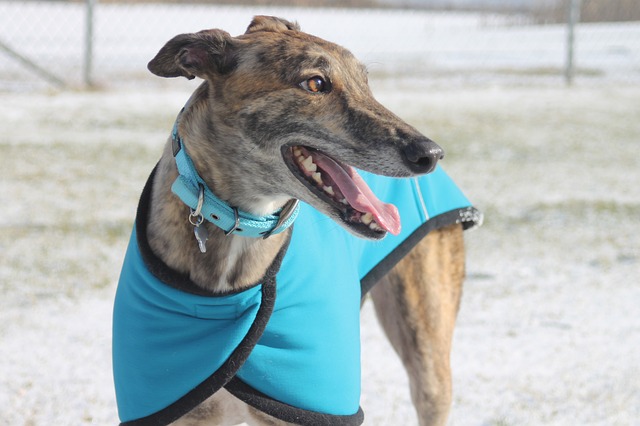
Like whippets, greyhounds were originally developed as racing dogs. They’re bred to run in short spurts after fast-retreating objects, so they’re not great around small animals or for off-leash work. However, they’re calm and affectionate companions that are great for many beginner homes.
Energy Level: Medium. Greyhounds love a good sprint, but otherwise are content to hang on the couch.
Coat Type: Very short. Greyhounds may need a coat in colder areas.
Brains: Average intelligence. Greyhounds rank 85 out of 137, and they generally require 25 to 40 repetitions to learn a new command.
Brawn: Long and leggy, greyhounds weigh 60 to 70 pounds and stand 27 to 30 inches tall.
6. Labrador Retriever
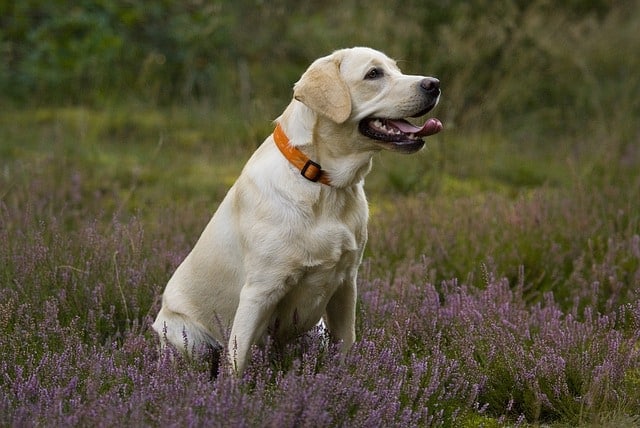
There’s a reason Labs are consistently in the top three most popular American dog breeds.
They’re smart, affectionate, and energetic without being overwhelming. Be sure to find a breeder who produces pet labradors, as hunting type labradors will have far more energy than the average household can handle.
Energy Level: Active. Labs need regular walks interspersed with more intense activity like hiking, running, training, or fetch.
Coat Type: Short and thick, labs shed quite a bit.
Brains: Smarty Pants. Ranked 7 out of 137. Labs took fewer than five repetitions to learn a new command.
Brawn: Large and sturdy, labs weigh between 55 and 80 pounds and stand around 21 to 25 inches tall.
7. Golden Retriever
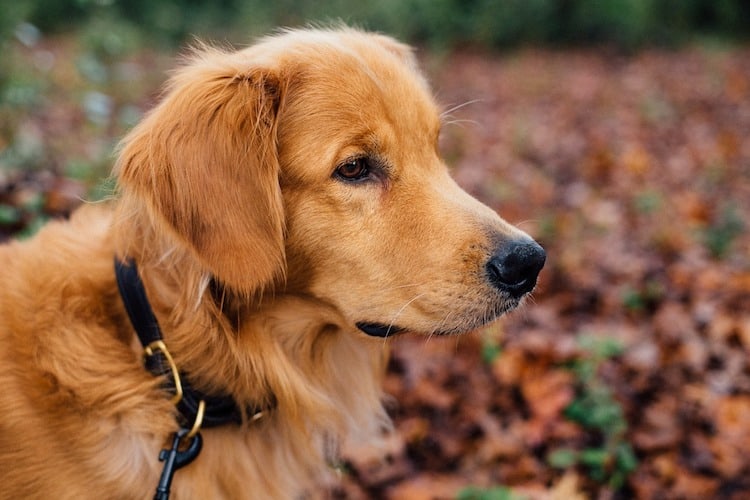
Another consistent “top dog,” golden retrievers take a bit more grooming than Labs, but also rank a little higher in intelligence.
For many, the difference between these two breeds comes down to looks and personal preference. Goldens are exuberant and friendly, like Labs, and are known for their relaxed and ever-present smile.
This friendliness likely comes from originally being bred for sharing a boat with strangers while guns go off around them — Labs and goldens are both duck hunting dogs.
Energy Level: Active, goldens need regular walks interspersed with more intense activity like hiking, running, training, or fetch.
Coat Type: Longish. Goldens require regular brushing that can usually be done at home.
Brains: Smarty Pants. Ranked 4 out of 137, goldens required fewer than five repetitions to learn a new command.
Brawn: A bit smaller than Labs, goldens weigh in around 21 to 24 inches and weigh 55 to 75 pounds.
8. Bernese Mountain Dog
Another giant but easy dog breed, Bernese Mountain dogs are friendly and relaxed.
Their silhouette is impressive and their bark commanding, but “Berners” are a perfect mix of looks, calm temperament, and willingness to adventure.
Energy Level: Medium-high, Bernese Mountain dogs enjoy hiking and even pulling carts but don’t need to run miles per day.
Coat Type: Long, Bernese Mountain dogs need regular brushing but shouldn’t have to be professionally groomed often.
Brains: Quick learners. Ranked 27 out of 137, Bernese Mountain dogs required 5 to 15 repetitions to learn a new command. This intelligence level is just about right for most owners who like a smart dog, but don’t want to be outsmarted regularly.
Brawn: Weighing in at 80 to 110 pounds, Bernese Mountain dogs pack a punch when they try to cuddle on your lap. They stand about 23 to 26 inches tall.
9. Great Dane
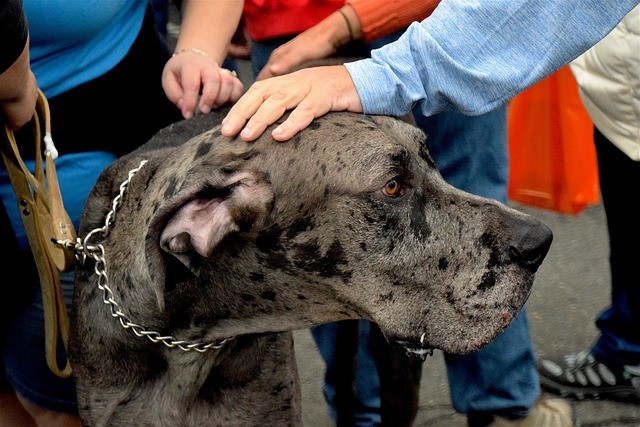
Giant and goofy, Danes are humongous couch potatoes. They’re known for being patient and affable, enjoying a good cuddle. Their drool and size might be daunting, but Danes are excellent companions for first-time owners and apartment dwellers.
Energy Level: Low-medium, Danes need to stretch their legs a few times daily but otherwise are very relaxed in home.
Coat Type: Short and easy, Great Danes don’t require much upkeep.
Brains: Average intelligence. Ranked 90 out of 137, Danes required 25 to 40 repetitions to learn a new command
Brawn: Gentle giants, Great Danes stand tall at 28 to 30 inches and weigh between 100 and 200 pounds.
10. Cocker Spaniel
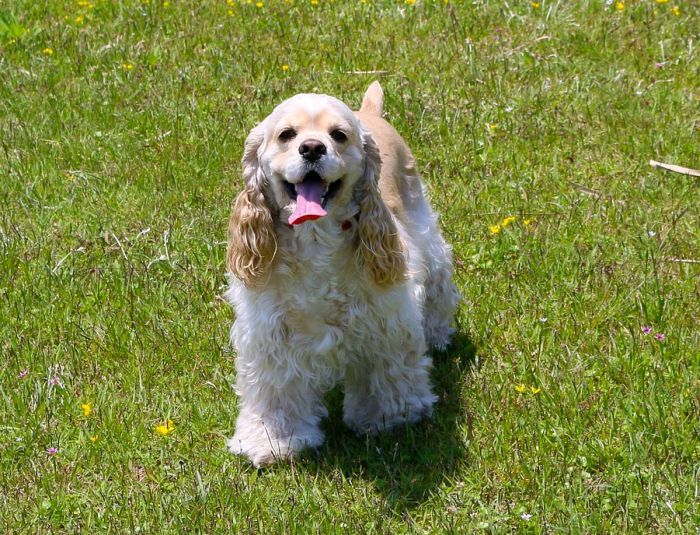
These goofy and friendly little dogs are highly adaptable and easygoing. They do require regular grooming and daily exercise, but otherwise fit into many first-time households well. Cockers tend to be a great balance of happy-go-lucky energy and affectionate snuggles.
Energy Level: High, cockers are bred to hunt birds and really thrive on regular exercise.
Coat Type: Long and silky. You’ll need to brush your cocker spaniel regularly or keep their hair trimmed short.
Brains: Smarties! Cocker spaniels are goofy, intelligent little problem solvers.
Brawn: Petite. Cockers weigh in around 20 to 35 pounds, but are a lot of energy in a small package!
11. Bichon Frise
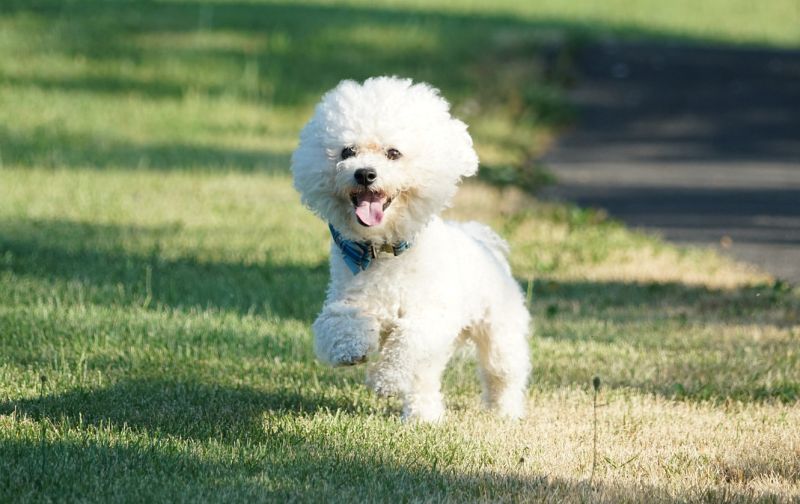
Small and fluffy, bichons are well-known as affable and goofy companions. Their easygoing nature and adorable poof of white make bichons a charming addition to new dog homes. They’re commonly described as peppy and curious, and are relatively confident and easygoing for small dogs.
Energy Level: Medium-low. Bichons are likely to be happy laying at your side and accompanying you around town, but will also enjoy brief bursts of high-energy play.
Coat Type: Long and fluffy. Your options with a bichon are meticulous brushing or regular trimming.
Brains: Average, ranked 45 out of 137. These dogs are fast learners but aren’t exactly working dogs!
Brawn: Tiny. Bichons weigh 16 to 18 pounds and are easily maintained by less-active owners.
12. Boston Terrier
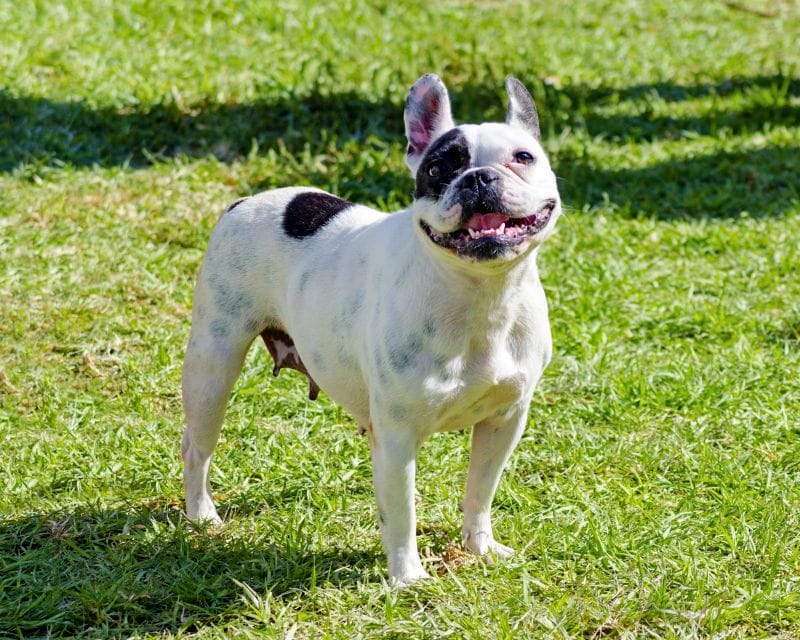
It doesn’t get much cuter than a Boston terrier. Luckily, these little dogs have a pleasant personality to match their adorable looks. They are known for being goofy, friendly, and adaptable. Paired with their small but sturdy size and easy-care coat, Bostons are excellent choices for first-time dog owners.
Energy Level: Medium to low. These little guys have pretty long legs and enjoy playtime, but they also tire easily thanks to their stocky builds, small statures, and brachycephalic (“squished”) faces.
Coat Type: Ultra-short. It truly doesn’t get much easier to care for than a Boston Terrier — but you may need to invest in some sweaters.
Brains: Bright, but they’re never the star of the class. Bostons are ranked 54 out of 137 for intelligence.
Brawn: These little guys just weigh 12 to 25 pounds and stand 15 to 17 inches tall.
Worst Dog Breeds for First Time Owners
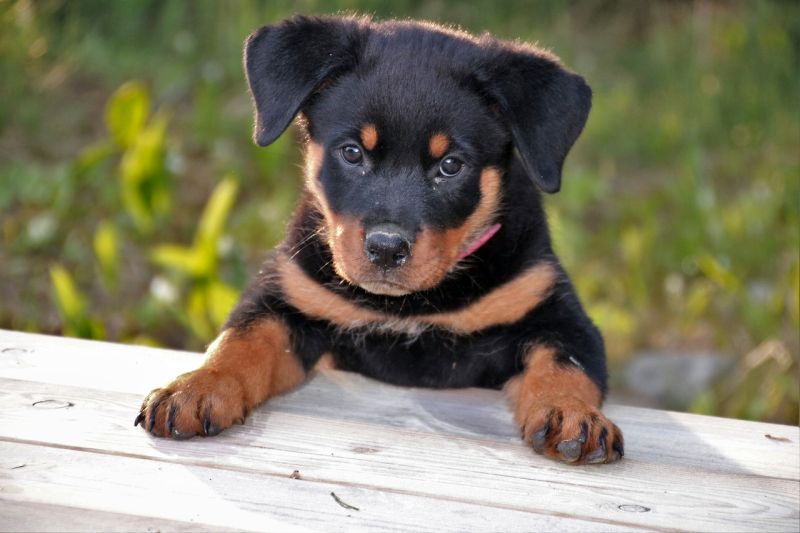
For first-time owners, it’s smart to avoid any large dog breed that is described as “aloof” or “reserved with strangers” or any other euphemism for unfriendly. The same goes for “primitive,” “independent,” or “strong-willed,” dogs.
In general, first-time owners should avoid dogs with unusual names unless they’ve got a good reason for choosing a Canaan dog, dogue de Bordeaux, basenji, or vizsla. If you struggle to pronounce your new dog’s name, you haven’t done enough research!
We want to be clear — these breeds are not bad breeds. Rather, they’re often challenging and need to be in the right home to succeed.
It’s worth noting that there’s always some variety within a breed, and all dogs are individuals. There are certainly some friendly chows and couch potato border collies out there. But in general, these breeds will pose a challenge to a first-time home, and aren’t recommended for greenhorn owners.
1. Shiba Inu
Shiba Inus are potentially the cutest dogs on the internet, but they’re not for beginners. Their independent nature makes people liken them to cats, and they can be very difficult to train. Almost every Shiba Ina I’ve met has been very shy, which is also difficult for some owners.
Energy Level: Active, Shibas need plenty of nice long walks. They should be kept on leash, though, since they’re often very difficult to train to come when called.
Coat Type: Short but very thick, Shibas will need semi-regular grooming.
Brains: Average intelligence. Shibas ranked 92 out of 137 and needed 25 to 40 repetitions to learn a new command.
Brawn: Small but full of personality, Shibas stand 13 to 17 inches tall and weigh 15 to 24 pounds.
Give your Shiba the best! Check out the Best Dog Foods for Shiba Inus!
2. Beagle
Cute and noisy, beagles are bred to run ahead of their owners and bark their heads off while chasing down game. This makes them really challenging dogs for most first-time owners.
Their independent work ethic, desire to sniff and chase, and loud bay is too much for the average owner. That said, they can be cheery and friendly in the right home.
Energy Level: Very active, beagles need plenty of exercise but should stay on leash.
Coat Type: Short and easy to care for.
Brains: Loveable lunks. Ranked 130 out of 137, Beagles needed 80 to 100 repetitions or more to learn a new command.
Brawn: Tiny for members of the hound group, beagles stand 13 to 15 inches tall and weigh just 20 to 30 pounds.
Read now: The Best Beagle Dog Foods!
3. Border Collie
Far too smart and energetic for their own good, border collies are bred for all-day farm work.
Unless you’re ready to make a big commitment to keeping your pup entertained and exercised, it’s best to skip this breed. When bored and underchallenged, border collies tend to bark, dig, and even nip at anything that moves in an attempt to herd it.
I love my border collie, but just ask my dogsitters — he’s not for everyone.
If you do go with a border collie, be sure to find a breeder that consistently produces puppies that fit your lifestyle and goals. There’s a big difference between a farm, sport, or show line border collie.
Energy Level: Extremely high. Border collies need regular mental and physical challenges every day.
Coat Type: Variable. Border collies come in smooth (aka short) and rough (aka long ) coat varieties.
Brains: Show-off brainiacs. Ranked 1 out of 137, border collies needed fewer than five repetitions to learn a new command.
Brawn: Packing a huge punch into a medium body, border collies weigh 27 to 45 pounds and stand 18 to 22 inches tall.
Got one of these high-octane hounds? Check out our guide to border collie dog foods!
4. Siberian Husky
Vocal and independent, huskies are beautiful runners that aren’t for the faint of heart. They’ll run you to the ground, sing dog songs until the neighbors call the police, and knock the socks off of everyone who looks at them.
They’re popular for a reason, but animal shelters are also full of huskies because they’re really not good for first-time owners.
Energy Level: High. Huskies do best in homes that can provide regular long workouts, like canicross training runs. Remember, they’re bred to literally pull a sled all day!
Coat Type: Thick and long, huskies need regular brushing and occasional grooming trips.
Brains: Average intelligence. Huskies rank 76 out of 137 breeds and need 25 to 40 repetitions to learn a new command.
Brawn: Medium sized, huskies weigh 35 to 60 pounds and stand 20 to 24 inches tall.
It’s worth noting that we never recommend purchasing, adopting, or rescuing a wolf hybrid dog (although wolf look-alike breeds are fine…although they too tend to be quite a bit of work to care for).
Humans carefully bred dogs for thousands of years to get away from the aloof, suspicious, and downright dangerous wolfy roots. Just because Nymeria didn’t eat Arya does not mean that a pet wolf is a good idea!
Wolf and coyote mixes belong in the wild. Even when raised from a young age, they tend to be highly possessive of toys and food and can be extremely dangerous.
Be sure to feed your floofy friend one of the best dog foods for Siberian huskies!
5. Dalmatian
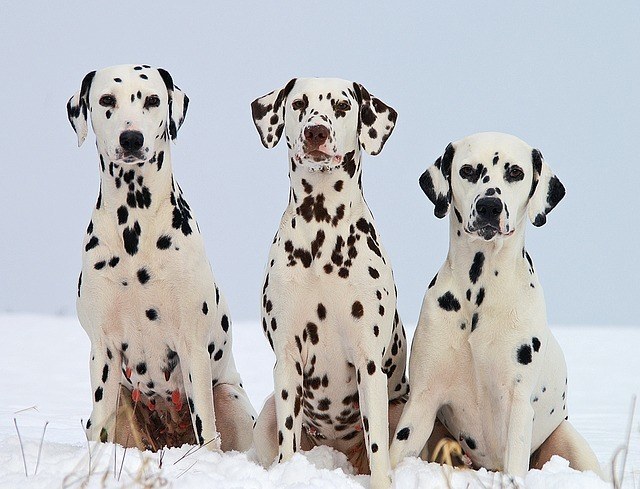
Popularized by the movie 101 Dalmatians, these dogs are notoriously difficult for even experienced owners. They were originally bred to run barking ahead of fire engines, so they need a lot of energy release and can be quite barky.
Energy Level: Very high — remember, these dogs are bred for running alongside fire engines and horses!
Coat Type: Short, requiring very little upkeep.
Brains: Ranked 61 out of 137, Dalmatians needed 15 to 25 repetitions to learn a new command.
Brawn: Another medium to large sized dog, Dalmatians weigh 45 to 70 pounds and stand 19 to 24 inches tall.
Check it out: 13 Doggone Good Dalmatian Foods!
6. Chow
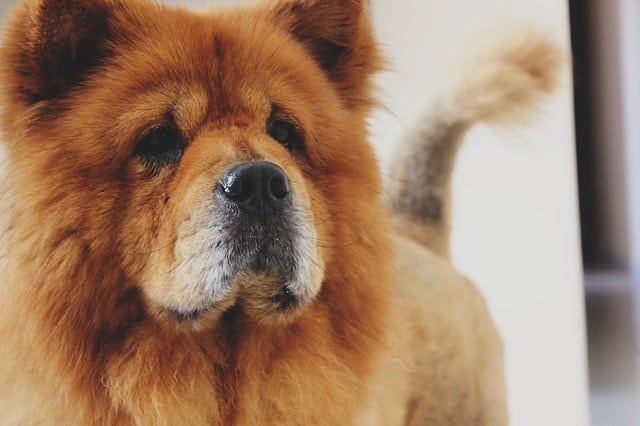
Everyone loves a chow’s purple tongue, but they are notoriously aloof four-footers. They’re quite suspicious of strangers and can be heartbreakingly disinterested in people or training.
Chows are very cute and dignified, but they’re not cuddly or great for first-time owners.
Energy Level: Low; chows don’t need much beyond regular walks.
Coat Type: Very long and thick, chows need regular intensive grooming sessions.
Brains: Loveable lunks. Ranked 134 out of 137, chows needed 80 to 100 repetitions or more to learn a new command.
Brawn: Chows look bigger than they are, but aren’t small dogs. They weigh 45 to 70 pounds and stand 17 to 20 inches tall.
7. Belgian Malinois
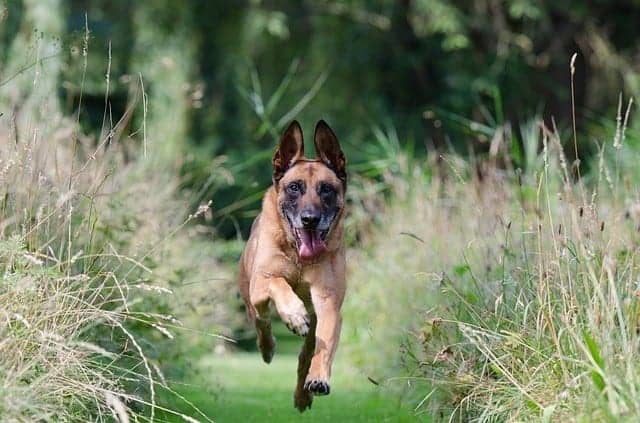
Super smart dogs and bred for dangerous work, Belgian Malinois are wonderful dogs to watch. They’re beautiful and tenacious, and terrible for most homes.
These dogs are bred to track down bombs and drugs over dangerous terrain or apprehend suspects for police, so they’re pretty hardcore. When not sufficiently exercised and trained, these dogs get very bored and destructive.
Their background as bitework dogs means they’re also quite quick to bite — and hold on.
Energy Level: Extremely high, Belgian Malinois need large amounts of mental and physical exercise per day.
Coat Type: Short, easy to groom.
Brains: Smarty pants. Ranked 26 out of 137, Belgian Malinois required 5 to 15 repetitions to learn a new command.
Brawn: Large and lean, Belgian Malinois weigh about 40 to 80 pounds but stand tall at 22 to 26 inches.
8. Cane Corso
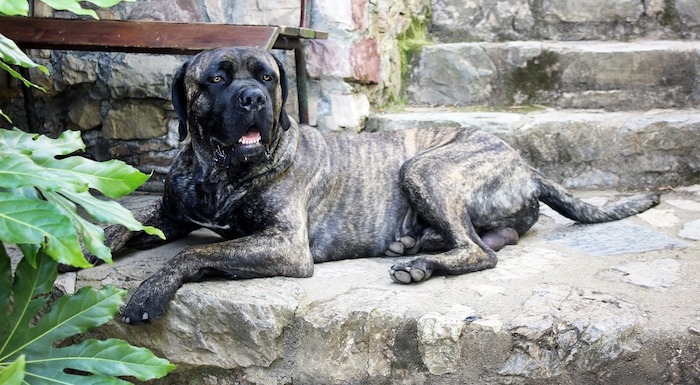
Large and impressive, cani corsi (the plural term for the breed) are intimidating dogs.
Cani corsi are bred to be guard dogs, fostering the tendency to become overly wary and suspicious of strangers and new things. This makes cani corsi difficult dogs for many homes.
Their loyalty to their favorite humans often comes at the expense of aggression towards strangers, so cani corsi need lots of positive training and socialization.
Energy Level: Medium, cani corsi love training and playing tug, but they aren’t endurance athletes. Give them enough outlets to avoid destructive behavior.
Coat Type: Short and very easy to groom.
Brains: Cani corsi are not ranked in The Intelligence of Dogs, but they are quite smart and enjoy training.
Brawn: Thick and imposing, cani corsi often exceed 100 pounds and stand 24 to 28 inches tall.
Check it out: The 11 Best Dog Foods for Cani Corsi!
9. Akita
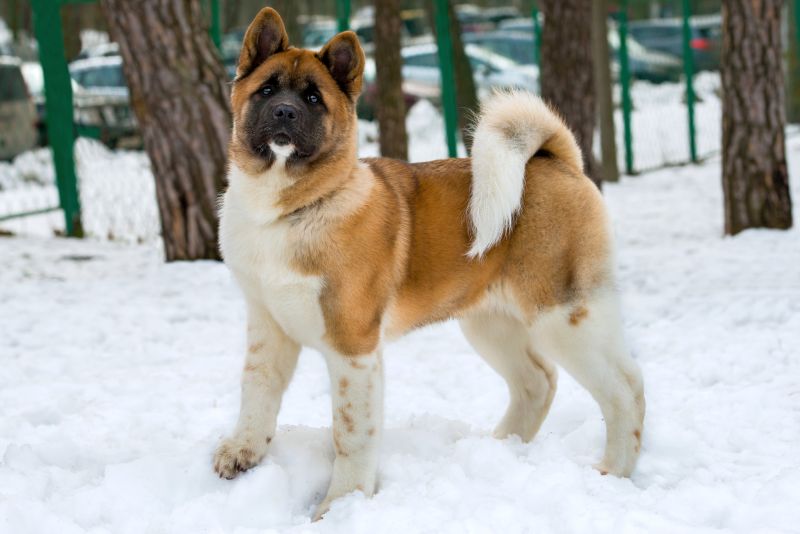
Gorgeous dogs popularized by the moving story of Hatchi, Akitas are not for the faint of heart.
Their origin story is in dispute, but Akitas were probably bred for bear hunting, dog fighting, guard dog work, or a combination of the three. All of this means that Akitas have unusually high levels of suspicion with strangers and aggression towards people and dogs.
When well-trained and socialized, Akitas are a beautiful and dignified companion — but they’re not a good dog for first-time owners.
Energy Level: Medium, Akitas need regular exercise and stimulation, but they aren’t full-time athletes.
Coat Type: Long and thick, Akita coats need a lot of brushing and occasional professional grooming.
Brains: Average intelligence. Ranked 103 out of 137, Akitas needed 25 to 40 repetitions to learn a new command.
Brawn: Large and majestic, Akitas weigh in at 70 to 130 pounds and stand 24 to 28 inches tall.
Feed your Akita right: The 13 Best Dog Foods for Akitas!
10. Rottweiler
Originally bred as a war dog, Rottweilers are not dogs for the faint of heart. This large, powerful breed can be incredibly affectionate with their family, but they are notorious for resource guarding issues. They can be aloof to downright aggressive with strange humans and dogs, making them tricky to manage as a newbie dog owner.
Energy Level: Medium. These dogs are bred to work and are extremely powerful, but tend to slow down with age a bit more than some other working dogs.
Coat Type: Short and easy to care for. Grooming is not going to be a challenge, though they shed more than you may expect!
Brains: Quick learners and astute observers. Ranked 9 out of 137 for intelligence, Rotties are fast learners with the brawn to back up their ideas!
Brawn: These powerful athletes often tip the scales at 100 pounds or more. Their sheer size and strength paired with their tricky temperament is the main reason they’re not suited for first time homes.
Read now: The Best Dog Foods for Rotties (from a Rottweiler Owner)!
11. Airedale Terrier
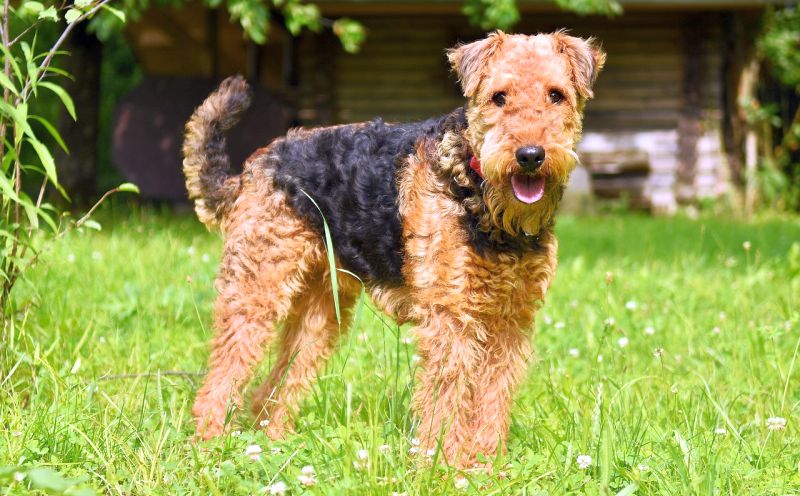
Notoriously clever and stubborn, Airedales are tricky simply because they’ve got a typical terrier temperament in a large dog body. Terriers are known for being independent thinkers and voracious predators. While this can be cute in a Jack Russell, it can be tricky to manage with a larger breed like an Airedale. They are also quite vigilant and may be unfriendly with strangers, an additional challenge for many households.
Energy Level: High. These smarty-pants require regular exercise to meet their needs.
Coat Type: Wiry. While they don’t shed much, Airedales require regular coat maintenance.
Brains: Clever. Ranked 29 out of 137, Airedales are quick studies that don’t back away from a challenge.
Brawn: Medium-large, Airedales weigh in at 50 to 70 pounds. While they’re not enormous, their challenge comes from that terrier personality in a lab-sized body!
12. Great Pyrenees
While these gentle giants are incredibly-well suited to specific household types, they’re not a great fit for your average first-time four-footer family. Originally bred to live outside and guard flocks of sheep from marauding predators, Pyrs are still incredibly independent and protective. They struggle in busy households, apartments, suburban, and urban environments. They simply aren’t bred to be pets; they’re bred to be outdoor guard dogs. While their puppies are ultra-cute (think little polar bears), they’re simply not a good fit for your average home once they grow up.
Energy Level: Low. These dogs are bred to sit on a hillside and watch the flock, then use their voice (and teeth if necessary) to fend off predators. They’ll rise to the occasion for a fight but don’t seek activity.
Coat Type: Thick and plush, Pyrs require regular brushing to avoid dreadlocks.
Brains: Medium-low, great Pyrenees are more known for their vigilance and bravery than their problem-solving or trainability.
Brawn: Huge! These dogs are bred to defend the flock from predators and live outside in tough conditions, so their large size and thick coat has a purpose. Great Pyrenees weigh 85 to 100 pounds or more.
Floofy Food: 11 Best Dog Foods for Great Pyrenees!
Don’t Like Our List? Here’s How to Make Your Personalized Breed List
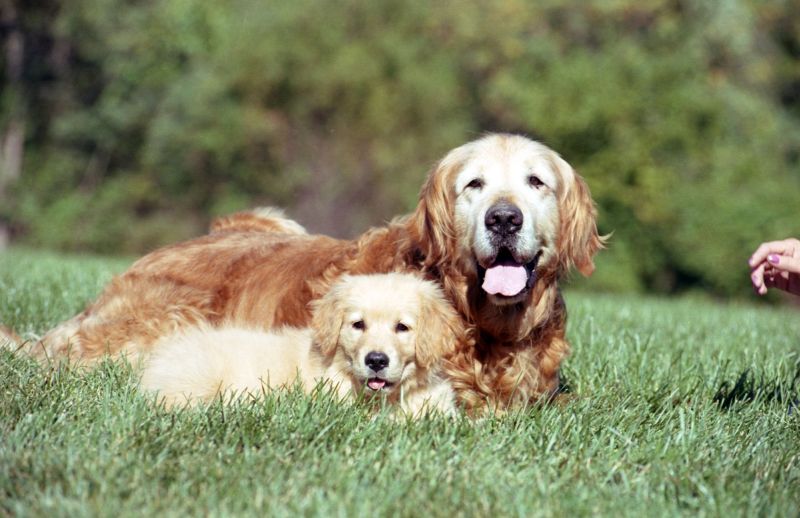
After you’ve come up with a list of desired traits for your future dog using the scorecard from our adoption guide, you’re ready to start looking at breeds.
Always create your list of desired traits first. That way, you can be clear-eyed and honest about how dogs measure up before you fall in love with idea of a Dogo Argentino.
Take a look at your list and your life. Do you want a dog that’s high energy, a weekend warrior, or a couch potato?
Be realistic about how much time you want to spend exercising and training your dog. Is it important that your dog is OK with other dogs or kids? Do you want to spend a lot of time off leash?
Sometimes, What You Don’t Want is Easier Than What You Want
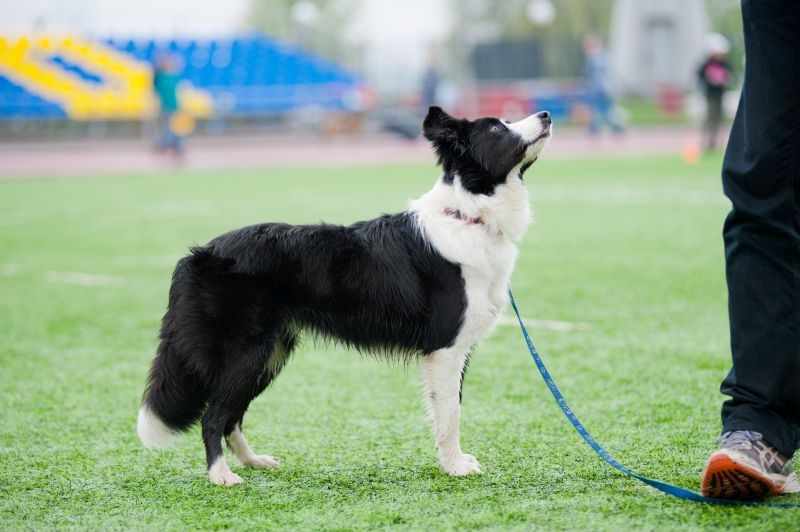
These questions can help you narrow down your search a bit.
When helping clients select a dog, I find it’s easier to start with what we don’t want. For example, I didn’t know exactly what I wanted when I started looking for a dog in 2016. I did know a few things I didn’t want:
No dog under 35 pounds. I wanted a sturdy adventure dog and wanted a dog that could keep up on extremely rugged Colorado mountains.
No dog over 80 pounds, for the same reason.
No dog that required regular professional grooming. I just can’t afford that.
No dogs that were banned by the City of Denver or my lease. That meant no Akitas, cane corsi, pit bulls, Dobermans, or Rottweilers.
No major barkers. I just find this irritating beyond belief.
No separation anxiety. I work 10 hour days and can’t afford daycare.
No dogs with major prey drive. My parrot Francis did not appreciate being terrorized.
From there, it was pretty easy to start crossing off breeds based on size, coat type, and breed bans. I narrowed down further by crossing off breeds that are extremely rare or expensive. That left me with a fairly manageable list of breeds.
Next, start doing some research. I like to start with the AKC website for a basic overview of breeds. I used this site to select the friendliest, smartest, and athletic breeds from the remaining breeds.
Skip the AKC “breed selector tool” other than for laughs. It gave me a list of breeds that I’ve never heard of with no clear reasoning. Really, I’m not sure why their calculator thinks a Komondor, Glen of Imaal Terrier, Porcelaine, or mountain cur are good fits for me!
After a few hours of research, I had a nice short list that included most herding dogs and a few retriever types. When you’ve narrowed your list down to under ten breeds, you’re ready to start talking to owners and meeting dogs.
Join Facebook groups, call breeders, and hang at dog shows or dog parks to find owners of your breed finalists. Interact with the dogs and talk to the owners about the ups and downs of their pup! This will help give you a better idea of what the day-to-day life of owning that breed is like.
Have you ever owned any of our ranked “best” or “worst” dogs for first-time owners? How did it go? Share your own experiences in the comments!
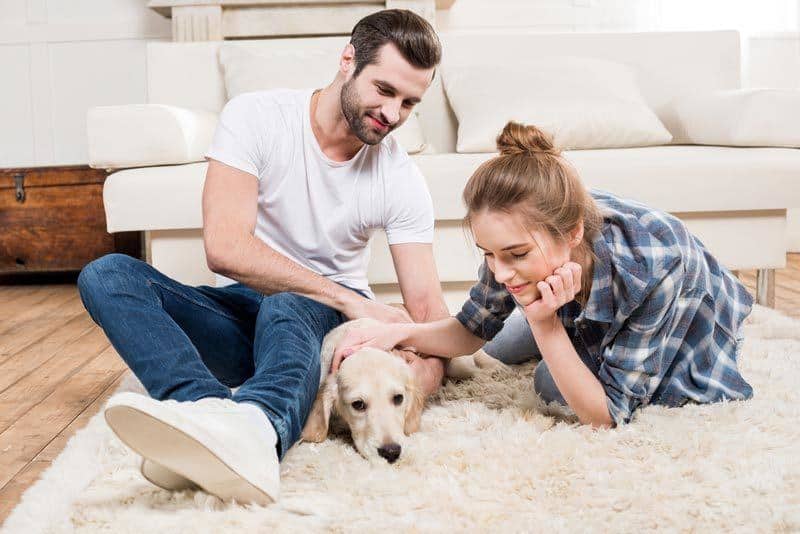

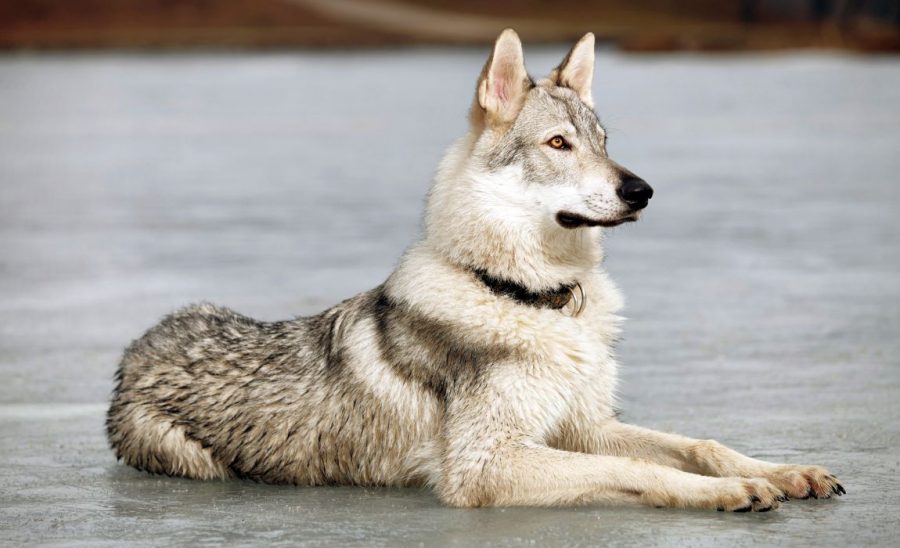


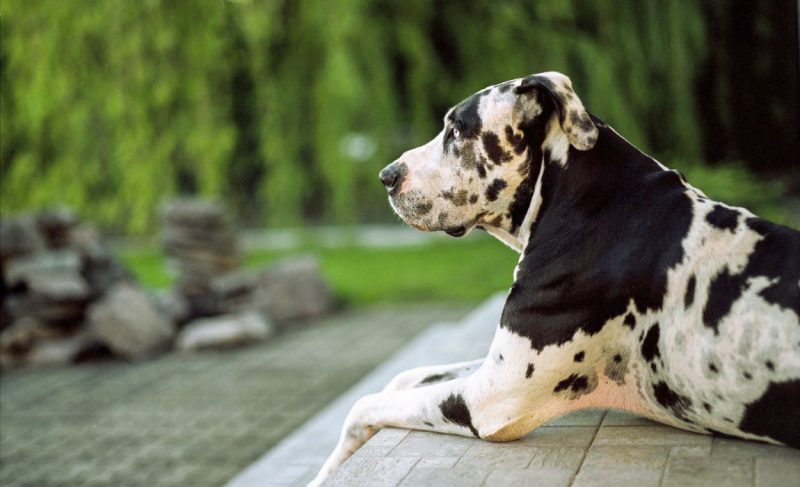
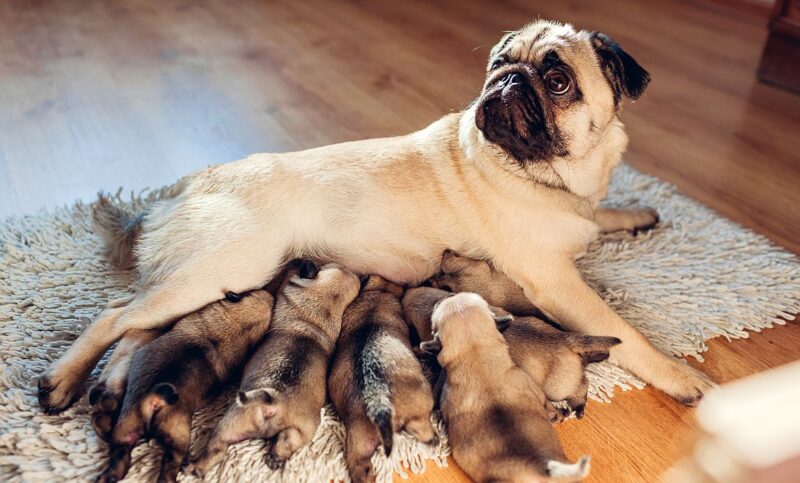

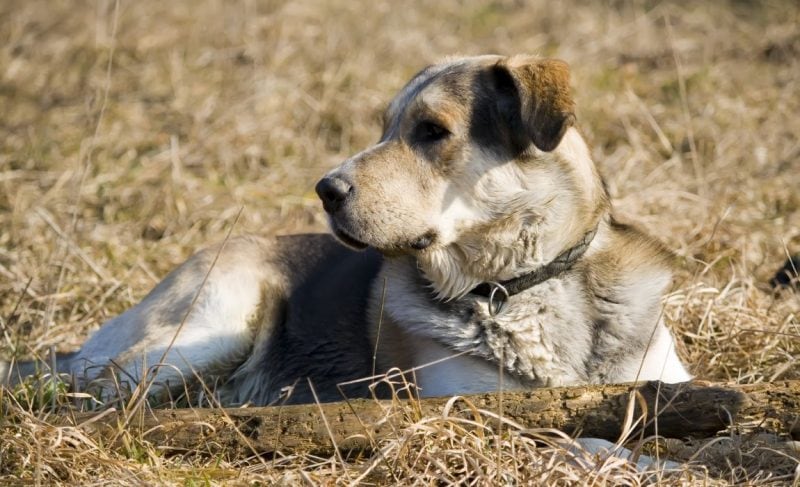
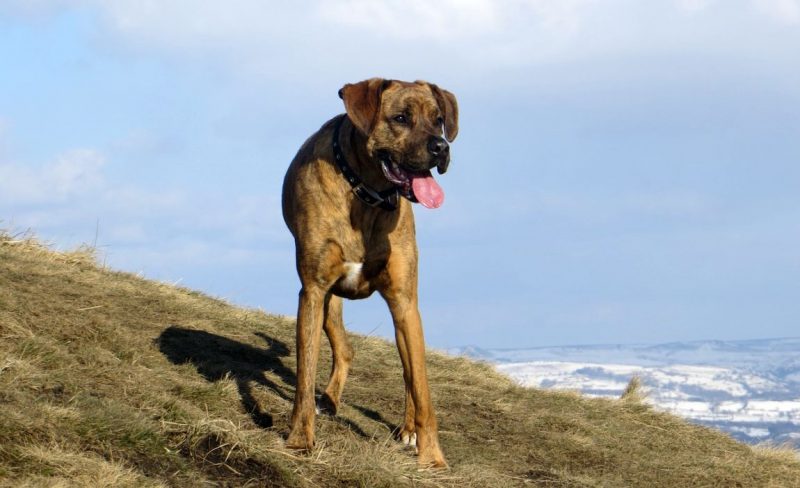
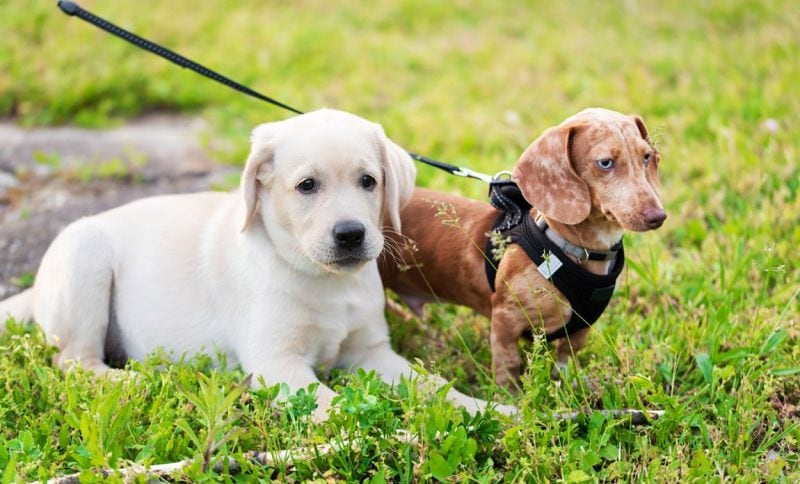
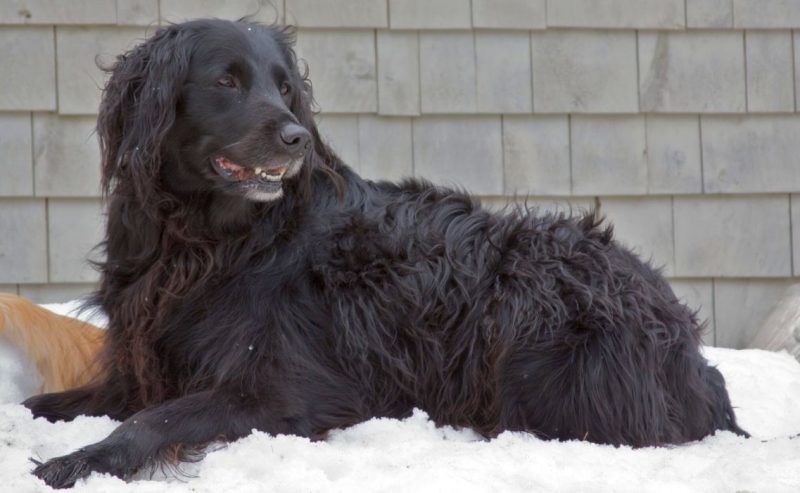

Leave a Comment